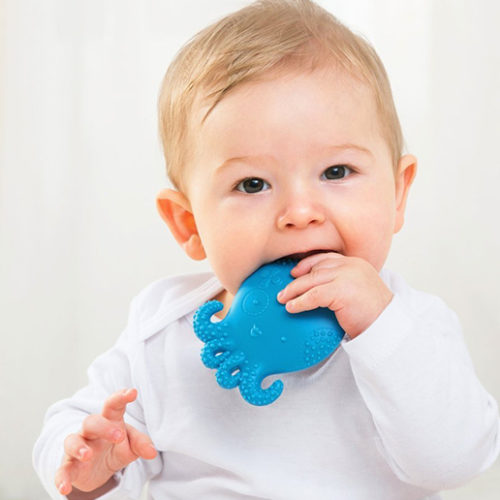How parents can support young children with ADD, ADHD and other learning difficulties

Clemmie Mason, Child & Adolescent Therapist at The Soke explains the challenges faced by parents and the importance of early identification and support for children with neurodiverse conditions such as ADHD and ASD.
Recent figures from the Department for Education reporting on the number of school refusals, estimate that 400,000 persistently absent children have a special educational need. The statistic, based on the first term of this academic year, shows that children with special educational needs are more likely to be absent from school than other children. In order to support a child navigating learning difficulties or a neurodiverse condition, the role of parenting together with understanding the challenges parents are facing, can have a significant impact on the child’s attendance at school and whole-child wellbeing.
Neurodiversity is complex, and even more so for children, considering that, for example, a diagnosis of ADHD will not be confirmed until a child is attending school (around six years old). This often means that those children younger than six years of age, may display traits aligned to ADHD such as lack of impulse control, signs of aggressive behaviour or strained peer-to-peer relationships. At home or in a nursery setting, depending on the care giver’s awareness of ADHD, the child may well be seen as an ‘enigma’ until an ADHD assessment is undertaken, and ADHD is diagnosed.
Similarly, traits such as sensitivities to noise and/or touch, or social interaction observations such as avoidance of eye contact could indicate a possible Autism-Spectrum-Disorder (ASD). It’s useful however to consider that cause and effect isn’t always clear at this age. Sensitivity to clothing can be caused by eczema, or equally vice versa. Whilst frustration with a friend could lead to a meltdown, so too can a feeling of overwhelm.
Learning difficulties are often more challenging to ascertain if a child is meeting all their developmental milestones. Unless a new behaviour is observed in a classroom, a child may successfully hide dyslexia or dyscalculia by masking. They may feel ashamed, and question what it might mean for them. By normalising and being accepting and supporting them holistically we can engage in meaningful conversations with them to explain that whilst some things can be more of a challenge, they’ll excel in other pursuits.
Instead of jumping to conclusions, for parents it is prudent to be curious about their child’s behaviour. In order to cultivate this curiosity, create time for meaningful interactions with your child. This will help you to be become more sensitive to their cues. Don’t start by looking at the things they don’t do. Start by focusing on what they’re really good at. Drip-feed your child’s self-esteem with praise. Adopt a positive mindset by exploring their strengths to build their confidence and improve their social skills.
Do help your child by working on focus and expanding that focus. Use visual cues (if they’re not reading yet) and create checklists for morning routines, or school bag items, according to the day of the week. Do provide strict rules and boundaries, to help keep them safe and organised.
Engage in teaching them (and yourself) about neurodiversity and the fact that everyone’s mind works differently. In fact, no two minds are alike. ASD is exactly that, a spectrum in which everyone could take up space. Affirming approaches can be powerful. I know of a teacher who, when noticing that a student with ASD was refusing to wear ear defenders for noise sensitivity, gave every single student in the class a pair of ear defenders and reassured the class that they are all welcome to wear theirs whenever they wanted to. This way the student was not singled out in her class or made to feel different.
There may be a plethora of reasons for seeking out a diagnosis, be it dynamics at home, parents being at odds of trying to understand their child’s behaviour, as well as common complaints such as it all being “too much to manage” or simply being worn down by sheer lack of sleep and frustration.
This brings with it a freeing aspect of having a diagnosis. Knowing that blow-ups will happen, and that your child does not have control over it. So often such a child will be seen as being unruly or headstrong when really it comes down to a lack of their own will and low self-esteem. Understanding the need for parents to be empathetic, not punitive, can transform the parents’ dynamic.
By modelling good behaviour, you are giving your child the best opportunity to witness emotional regulation in action. Partake in parent training to help improve communication with your child and promote proactive discipline methods. Remember that rewards such as a star chart do not work in the same way as it would with a neurotypical child.
Attend group therapy with other parents, in which a clinician can provide valuable coping strategies whilst the shared learning experience will provide relief, knowing that you are not alone.
Work collaboratively with schools and teachers and learn how to become your child’s advocate. Every school has a different way of managing it, with much improvement seen across the board. As a result of training and a subsequent better understanding of ADHD, ASD and learning difficulties, many interventions are being utilised, such as the provision of brain breaks and movement breaks, zones of regulation, adaptive learning aids and smaller breakout rooms. Some schools offer trampolines, or an opportunity to venture out with a Teaching Assistant in a small group to gain a sense of mastery in learning a new skill like gardening, for example.
Practise open and transparent communication with SENCO leads when discussing Educational Psychology assessments and recommendations which aim to improve the child’s learning and wellbeing, holistically. Educational Psychologists’ input is important for creating a child’s Education, Health and Care Plans (ECHPs) as well as delivering school interventions and supporting teaching staff.
Finally, make time for self-care. Family dynamics can be exhausting, especially if your partner or your child’s sibling also has an ADHD or ASD diagnosis. Recognise the challenge and engage in therapy by accessing an integrated system of care, ensuring that your family’s psychological needs are met at every junction.
For more information, visit the website
Image Credit: The Soke












Comments